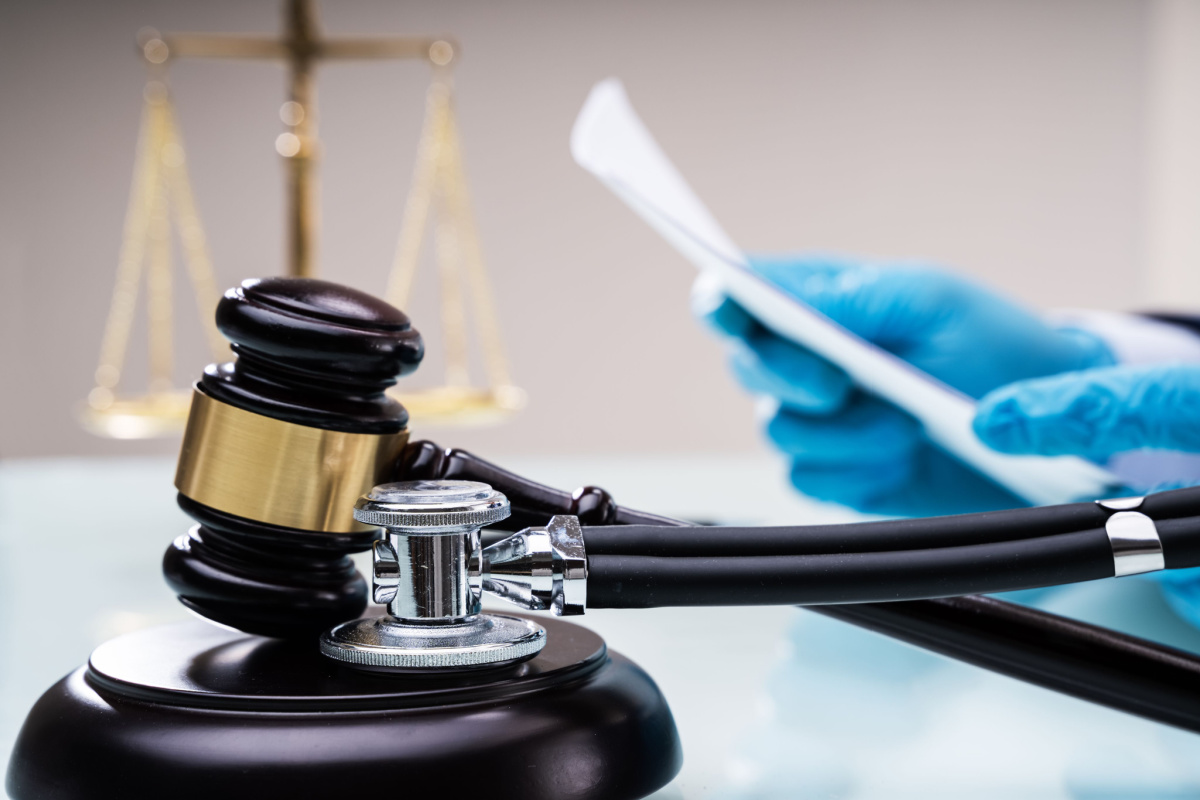
Berlin Hebert was an introverted Vietnam veteran that rode motorcycles and sported multiple tattoos. Richard Deakes was an outgoing bingo enthusiast and regular churchgoer. In spite of their differences, the two roommates at the Southeast Louisiana War Veterans Home in Reserve became close friends. In April 2020, they contracted COVID-19. Sadly, they both became seriously ill and died one day apart.
The families of the men decided to sue the facility for medical malpractice – claiming the veterans home were negligent in preventing the spread of coronavirus. A medical panel ruled the facility breached their standard of care and had committed gross negligence.
Medical malpractice arises when a healthcare provider, which includes doctors, nurses, and technicians, does not provide the level of care that is expected and appropriate for their profession. This failure to meet the standard of care may lead to harm or injury to the patient. Understanding the common examples and the criteria for proving a case is crucial to achieving a successful outcome.
When it comes to certain medical conditions, early diagnosis and prompt treatment can mean the difference between a full recovery and a life-altering outcome. In some cases, a healthcare professional’s failure to timely diagnose a serious condition, such as cancer, heart attack, or stroke, can have devastating consequences. Delayed diagnosis can result in the need for more aggressive treatment, decreased chances of survival, or irreversible damage to the patient’s health.
Undergoing surgery can be a stressful experience for patients, and they place a great deal of trust in the hands of their surgeons and medical team. Unfortunately, surgical errors can and do occur, leaving patients with lasting physical, emotional, and financial consequences. Examples of surgical errors include wrong-site surgery, incorrect surgical procedures, foreign objects left inside the patient, or damage to surrounding tissues and organs. To establish medical malpractice in these cases, it is crucial to show the surgical team breached the standard of care and this breach directly caused the patient’s injuries or complications.
Anesthesia plays a critical role in ensuring patient comfort and safety during surgical procedures. However, errors involving anesthesia administration can lead to severe complications, permanent injury, or even death. Common anesthesia errors include incorrect dosage, failure to monitor vital signs, allergic reactions, or improper intubation. The consequences can range from mild discomfort to brain damage, paralysis, or other life-altering conditions.
Medications are an essential tool in the treatment and management of various medical conditions. However, errors in prescribing, dispensing, or administering medication can lead to serious consequences for patients. Common medication mistakes include incorrect dosage, drug interactions, administering the wrong medication, or failing to consider a patient’s allergies. These errors can result in severe side effects, organ damage, or even death.
The birth of a child is a momentous occasion, but complications during labor and delivery can result in life-changing injuries for both mother and baby. Medical malpractice in childbirth can involve failure to detect fetal distress, improper use of forceps or vacuum extractors, or delay in performing a necessary cesarean section. These errors can lead to conditions such as cerebral palsy, Erb’s palsy, or maternal hemorrhage.
Proper follow-up care is essential for patients’ recovery and well-being after medical procedures or treatments. Inadequate monitoring, failure to address complications, or neglecting to provide necessary instructions can significantly impact a patient’s health. Examples of inadequate follow-up care include neglecting to schedule follow-up appointments, not addressing patients’ concerns, or ignoring signs of infection or other complications. When a healthcare provider’s negligence in post-treatment monitoring leads to further harm, it may be considered medical malpractice.
Patients rely on hospitals to provide a safe and sterile environment for their care, but hospital-acquired infections (HAIs) can pose a significant threat to their well-being. These infections often result from inadequate infection control measures, such as improper sterilization of equipment, insufficient hand hygiene, or contaminated surfaces. HAIs can lead to serious complications, prolonged hospital stays, or even death.
Informed consent is a fundamental aspect of healthcare, ensuring patients are fully aware of the risks, benefits, and alternatives of a proposed treatment before agreeing to proceed. Healthcare providers have a duty to obtain informed consent before performing any medical procedure or administering treatment. Violations of informed consent can occur when a provider fails to disclose necessary information, misrepresents the risks, or proceeds without the patient’s agreement.
Successfully pursuing a medical malpractice claim hinges on establishing four key elements. These are:
Establishing these elements is crucial for a successful medical malpractice claim.

The statute of limitations is a crucial factor to consider when filing a medical malpractice claim, as it sets a strict deadline for initiating legal action. In Louisiana, the statute of limitations is one year from the medical provider’s negligent act. If patients are unaware of the malpractice initially, they have one year from the date they became aware or could have reasonably discovered it.
It is important to note the plaintiff is responsible for proving they did not, and could not have reasonably discovered the negligence more than a year before initiating the lawsuit when relying on the discovery rule.
Louisiana law also stipulates all medical malpractice lawsuits must be filed no later than three years from the date of the alleged negligence. This is referred to as a “statute of repose,” which prohibits lawsuits filed more than three years after the malpractice took place, regardless of the severity of the medical error or whether the patient had a reasonable chance to discover the error and resulting damage.
The timeline for Louisiana’s medical malpractice statute of limitations is halted, or “tolled” in legal terms, when a plaintiff requests a review from a medical review panel. This step is mandatory in nearly all medical malpractice cases in the state before proceeding with a lawsuit.
If you have been injured in a car accident or harmed by the negligence of a medical practitioner, contact or call us at (504) 294-5094 today for a free consultation.

With over 50 years of legal experience serving families in the New Orleans area and surrounding Louisiana communities, our firm takes pride in providing clients with personalized legal services tailored to individual needs.